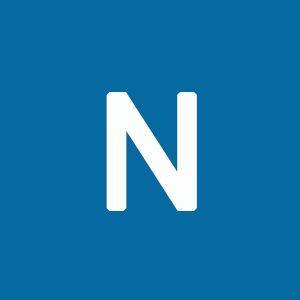|
Machine Learning Approaches for Convergence of IoT and Blockchain
GUEST EDITORS:
B. Balamurugan (lead GE), Galgotias University, India, [email protected]
Naveen Chilamkurti Smieee, La Trobe University, Melbourne, Australia
K. K. Singh, GL Bajaj Institute of Technology and Management, Greater Noida, India
Bharat S. Rawal Kshatriya, Penn State Abington, USA
DESCRIPTION
Digital revolution is characterized by the convergence of technologies, rapidly advancing fourth the industrial revolution thereby blurring the lines between physical, digital and biological objects. The speed of the fourth revolution which evolves at an exponential rate cannot by any means be compared with any previous technologies. AI and IoT employ the interactions and operations in various fields such as home appliances, autonomous vehicles, nanotechnology, robotics, cognitive systems, self-driving cars and wearable devices. The potential of blockchain technology is realized in many sectors nowadays as security plays a crucial role everywhere. There is a tremendous increase in the usage of AI and IoT technologies in various firms. AI has big potential to identify the patterns and anomalies in the data generated by IoT sensors. The accuracy of operational predictions using AI technologies is greater when compared to threshold-based monitoring systems. IoT and connected systems drive AI as intelligent automation which makes sense of data generated from sensor devices in decision making process. Blockchain plays a significant role in providing security during data handling operations and defines how trusted transactions can be carried out addressing the solution for internet facing vulnerability problems. Blockchain solves the security fault line among AI and IoT where most of the IoT devices are connected to each other through public networks. Linear and permanent indexed records are maintained in blockchain to face the vulnerability issues. Many applications and concepts, common to these technologies, are already in practice with promising results. Gaining control of the device and records is hard in the blockchain system and consequently the blocks are maintained and guarded. IoT devices are sharing information via public networks which paves the way for vulnerability and the risks increase even more if AI is also involved. Furthermore, the blockchain system has robust security implementations able to afford scalable, secure and verifiable platform. Peer-to-peer model is a competent solution for the effective communication in centralized client /server paradigm. Blockchain ensures security by using distributed ledger shared amongst the nodes in the network for transactions. Transactions are verified using cryptographic techniques to authenticate and identify the nodes and therefore there is no role for any central authority.
Nowadays, smart IoT medical devices are influenced by AI to make lifesaving decisions using biometric data. In smart vehicle insurance, IoT sensors are fixed in a car and fault may occur in any part of the car. In such a case, AI assists the sensor to detect the fault with the help of data generated by the IoT devices. In addition, if blockchain is incorporated then the situation again changes. Once the sensor detects the fault then the insurance claim will be automatically credited to the user’s account. In fact, the convergence of blockchain, AI and IoT will revolutionize the insurance industry. Consider that self-driving trucks are designed with AI technologies to dispatch goods to distribution centres. Self-driving cars should be directed to a charging station for automatic charging. Smart contract framework makes the truck to be charged in the charging station after proper authentication and authorization. Ledger issued to record the transaction in the smart contract makes the system more secure which prevents tampering. The goods can be delivered to the customers with the IoT devices which is employed and monitored by retail companies. AI algorithms assess on-site safety management to examine the heat stress levels of workers using IoT sensor devices to measure data such as humidity, temperature etc. This scenario would be complete if workers are insured and the blockchain system is implemented for assuring security. The AI algorithm detects heat stress of workers and ensures worker safety, whereas blockchain ensures prompt insurance. All these combined technologies can leverage the power of each other and suggest way for a platform where data can be generated, processed and secured by making use of the IoT system, AI algorithm and the blockchain technology.
The topics of this special issue include, but are not limited to:
Frameworks, architectures and models for convergence of machine learning, IoT and blockchain
AI and ML based blockchain solutions for IoT
Management of blockchain using machine learning
Blockchain for validating AI decisions
Machine learning based blockchain for data storage
Machine learning based blockchain transactions
Machine learning techniques for blockchain data exchanges
IoT and blockchain challenges
IoT and blockchain: the broader picture and future
Machine learning techniques for optimization of IoT
Blockchain enabled IoT platforms
IoT security using AI and blockchain
Blockchain based learning analytics platform
Blockchain solutions for big data challenges
Blockchain and artificial intelligence technologies for biomedical research and healthcare
Blockchain and IoT across industries
Blockchain-based intelligent transportation systems
Emerging applications of blockchain, machine learning and IoT
Machine learning applications for IoT healthcare
Machine learning applications for IoT based CRM
Machine learning based knowledge extraction techniques for smart platforms
Machine learning techniques for analysis of sensor records
Any other related applications
The authors are requested to submit their full research papers complying with the general scope of Open Computer Science journal. The submitted papers will undergo peer review process before they can be accepted. Notification of acceptance will be communicated as we progress with the review process.
HOW TO SUBMIT
Before submission authors should carefully read the Instruction for Authors:
www.degruyter.com/view/supplement/s22991093_Instruction_for_Authors.pdf
Manuscripts can be written in TeX, LaTeX (strongly recommended) - the journal’s LATEX template. Please note that we do not accept papers in Plain TEX format. Text files can be also submitted as standard DOCUMENT (.DOC) which is acceptable if the submission in LATEX is not possible. For an initial submission, the authors are strongly advised to upload their entire manuscript, including tables and figures, as a single PDF file.
All submissions to the Special Issue must be made electronically via online submission system Editorial Manager: www.editorialmanager.com/opencs/
All manuscripts will undergo the standard peer-review procedure (single blind, at least two independent reviews). When entering your submission via online submission system please choose the article type “SI on Machine Learning Approaches for Convergence of IoT and Blockchain”.
Submissions to the Special Issue are now open !!!
Individual papers will be reviewed and published online on an ongoing basis.
Important dates (approx.):
Deadline for submissions: June 20, 2019
1st round of acceptance notification: September 15, 2019
Submission of revised papers: October 15, 2019
2nd round of acceptance notification: November 5, 2019
Publication online: December 2019
Contributors to the Special Issue will benefit from:
NO submission and publication FEES
indexation by Clarivate Analytics - Web of Science (ESCI) and Elsevier - SCOPUS
fair and constructive peer review provided by experts in the field
no space constraints
convenient, web-based paper submission and tracking system – Editorial Manager
free language assistance for authors from non-English speaking regions
fast online publication upon completing the publishing process
better visibility due to Open Access
long-term preservation of the content (articles archived in Portico)
extensive post-publication promotion for selected papers
We are looking forward to your submission !!!
In case of any question please contact Prof. Balamurugan (lead Guest Editor, [email protected]) or Dr. Justyna Żuk (Managing Editor of Open Computer Science, [email protected]).
|










